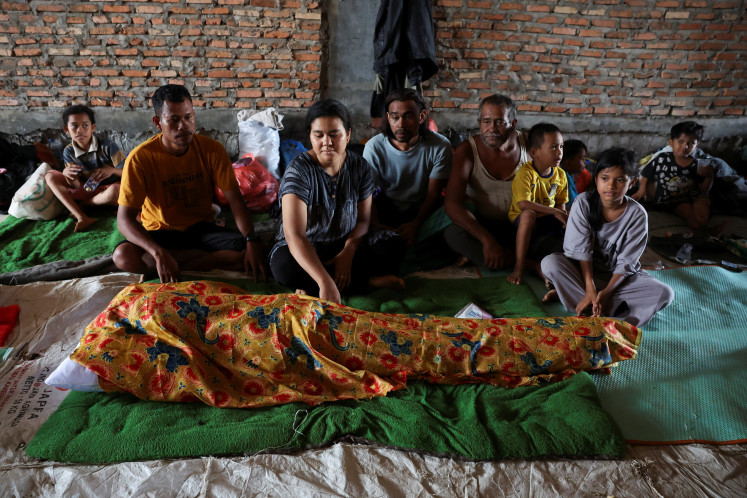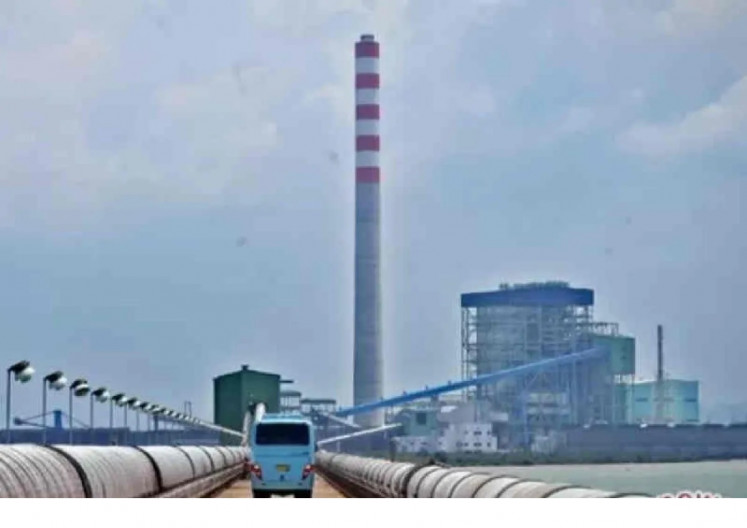Popular Reads
Top Results
Can't find what you're looking for?
View all search resultsPopular Reads
Top Results
Can't find what you're looking for?
View all search resultsThousands of hectares converted into farmland in Way Kambas
For those who have never been to the Way Kambas National Park (TNWK) in East Lampung regency, Lampung, the impression may be that the 125,000-hectare reserve features dense growths of large trees and a multitude of wild animals, crisscrossed with crystal clear rivers
Change text size
Gift Premium Articles
to Anyone
F
or those who have never been to the Way Kambas National Park (TNWK) in East Lampung regency, Lampung, the impression may be that the 125,000-hectare reserve features dense growths of large trees and a multitude of wild animals, crisscrossed with crystal clear rivers.
However, they may be disappointed once they enter the area, which is also designated as a tourism site.
The park has been devastated by illegal logging, forest conversions and animal poaching, due to lax law enforcement.
Since 2001, dozens of poachers and illegal loggers have been caught, among them a high-ranking naval officer and officers from the police's elite Mobile Brigade. However, none of the violators have been punished for infringing the environment law. Cases involving military and police personnel have never been resolved.
Widespread forest conversions in the national park rose sharply in 1998, along with the onset of the so-called Reformation era, or the downfall of former president Soeharto's iron-fisted rule. Thousands of immigrants from Java, Sulawesi and a number of provinces in Sumatra arrived in the area to begin new lives.
Data from the Lampung Forest Coalition (KHL) shows as much as 60 percent of forested areas in the national park have been severely damaged due to illegal logging, with another 1,000 hectares converted into cassava and corn farms.
TNWK head Hudiono said his office, along with dozens of forest rangers, was working hard to secure the park from conversions and poaching.
"We only have a few dozen officers to guard the 125,000-hectare park, so it's impossible for us to oversee illegal logging and poaching activities everywhere within the forest," he said.
A newcomer from East Java, Rahmani, said he had been engaged in cassava farming in the park for the past 10 years.
"I only plant on wasteland. Cassava and corn have been grown in this area for years," he said.
Several residents living around the TNWK said they had set up cassava farms in the area because they did not benefit from anything in the forest.
"People from outside the area are free to fell the trees and sell them to timber companies over the past decades. When forested areas have been turned into wasteland, only then do we grow cassava on it," said Sunardi, 43, a resident of Kuala Penet, East Lampung.
Another resident, Subandi, 58, said the farms set up by residents were a form of protest against government policies that seemed to tolerate illegal logging within the park.
"Some park employees were recently caught for illegal logging, but were released just like that. This has occurred many times, but we, who have only used wasteland, are questioned. It's not fair," he said.
He added that among the prized trees sought by timber companies were the meranti and tenam. Meranti can fetch millions of rupiah per cubic meter on the market, while traders buy them from illegal loggers for only a few hundred thousand rupiah.
"The perpetrators are usually hired hands. They are not from around the area. Local residents only get the remains of the illegally logged trees. They open up cassava farms only when the forested area has been turned into wasteland," Subandi said.
Timber companies are free to take timber out of the forest due to the number of strategic routes in the area. Among the routes often used by illegal loggers are those through Cabang village, Seputih Surabaya district, and Rasau village, Gaya Baru district, and Sadewa village in the Way Seputih River delta area, all in Central Lampung regency.
The route through Sadewa village is the easiest way to get timber out of the forest, because it is situated at the mouth of the Way Seputih River.
The timber can be collected at the river and then transported on trucks. It can also be loaded onto barges and shipped cross the Sunda Strait to Karangantu Port in Banten.
Wildlife Conservation Society activist Sugiyo said forest conversions within the TNWK had caused the obliteration of the habitat of the Sumatran elephant.
"As a consequence, herds of elephant have frequently ventured out of the forest, destroying coffee and cacao farms and residents' homes," he said.
"There is a new conversion area, spanning 1,000 hectares, in the middle of the TNWK, exactly in section III in the Susukan Baru resort."










